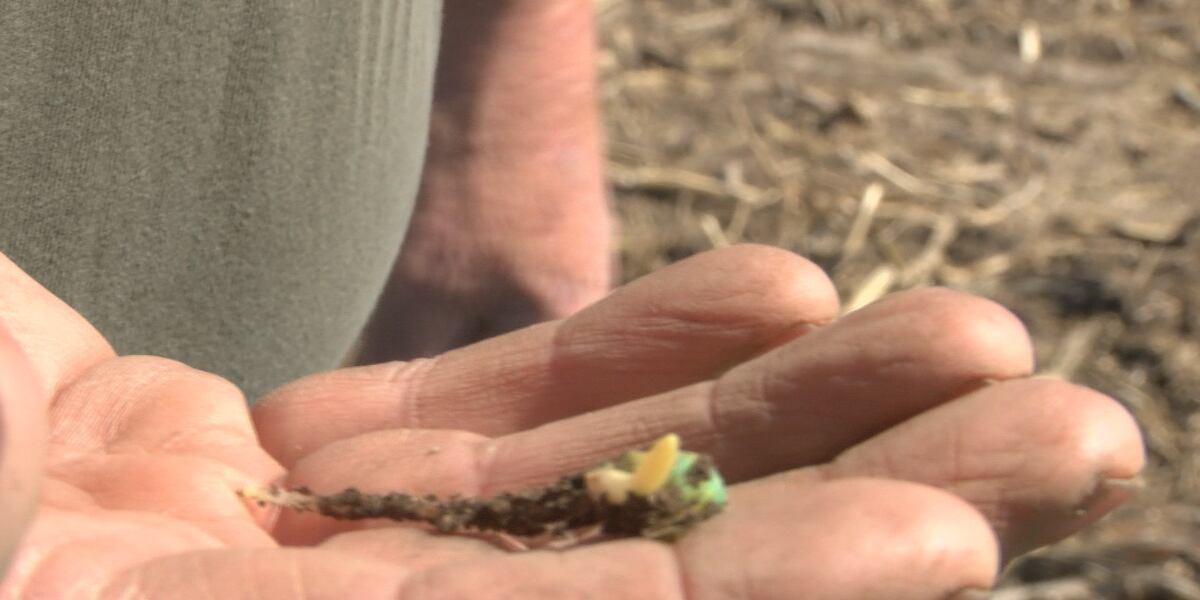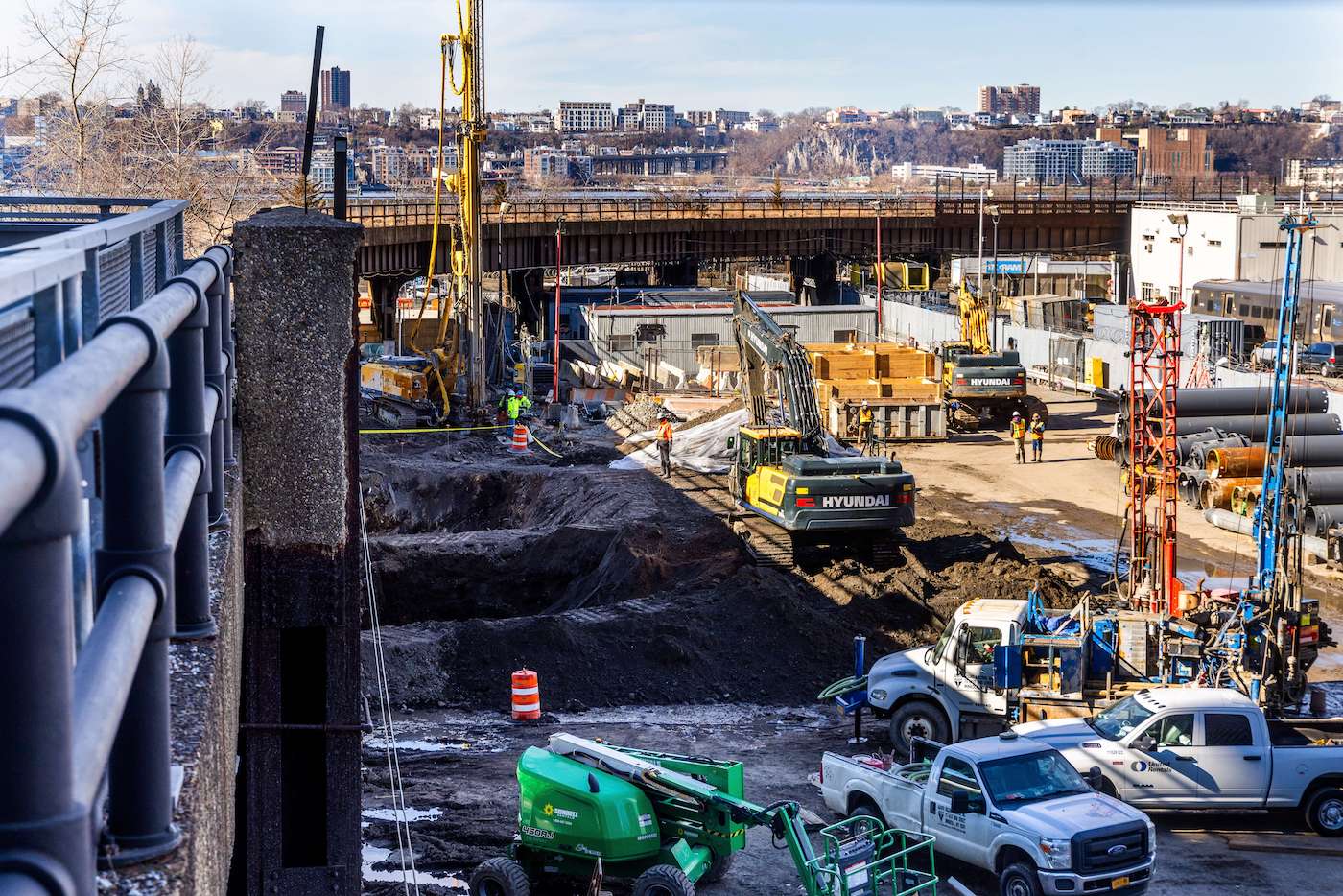Minnesota
“One pill can kill”: Minnesota authorities stress dangers of fentanyl as overdoses rise

MINNEAPOLIS — One pill can kill — that was the message federal and state partners stressed as illicit fentanyl continues to circulate.
The DEA took about 2.5 million lethal doses of fentanyl off Minnesota streets last year alone. Despite that eye-popping number, it’s not enough.
Fentanyl is a dangerous synthetic opioid that is 50 times more potent than heroin and responsible for ripping families apart, including Michelle Loberg’s.
WCCO investigates the fentanyl crisis in Minnesota
Oct. 12, 2020, will always be a dark day for Loberg.
“I just really wanted to say goodnight and tell him I was proud of him,” Loberg said.
Instead, she walked in on her 20-year-old son Nicholas unconscious and suffering from fentanyl poisoning after purchasing what he believed was heroin.
That day she lost a piece of her, but she’s turning her pain into purpose and fighting to save lives.
In 2022, nearly all of the 922 synthetic opioid-related deaths involved fentanyl, according to the state health department.
That’s why federal and state partners are working overtime to keep pills off the streets.
The United States Attorney’s Office along with the Drug Enforcement Administration hosted a community conversation focused on fentanyl awareness and prevention Wednesday afternoon.
“It’s not getting better,” said United States Attorney General Andrew Luger. “It’s getting worse, pills are cheaper, market is being flooded we need to both as much enforcement we can decrease demand.”
And with those cheap counterfeit pills, people may not know what they’re buying is cut with fentanyl.
Drug Enforcement Administration Assistant Special Agent in Charge Rafael Mattei says seven out of ten pills seized and had two milligrams of fentanyl, which can be lethal.
More Minnesotans, including children, succumbing to fentanyl-related deaths
Mattei believes enforcement combined with education can help bring this crisis under control.
“We are not going to be able to out-arrest ourselves out of this, we need the public, partners and teachers,” Mattei said.
Educating on the dangers of just one pill, as law enforcement partners continue investigating and prosecuting.
Getting help for an addiction is available for free 24/7. Call 800-662-HELP to get access to the resources needed.

Minnesota
Minnesota resort prepares for state's fishing opener.

LAKE PARKE — It’s a sign summer is right around the corner.
After an abnormally warm winter, fishing experts said even with the recent rain, the lake levels will be low.
End of the Road Resort Owner Chery Hedlund said they were blessed with an early ice out this year.
Hedlund said the ice went off Upper Cormorant the first week in April, a month earlier than last year.
So Hedlund has been busy getting the resort’s 10 cabins ready for guests for opening day on May 11.
The resort is booked for the first full week.
“We’re turning around, putting in the docks and cleaning up the cabins and cleaning up the yard, and go to town and buy bait,” said Hedlund.
But it hasn’t been all good news with Mother Nature, as they’re dealing with low lake levels.
“We’ve been blessed with the last couple of weeks of rain. So it brought it up enough to tolerate the people who are going to be able to pull up to the docks, like they normally are used to. But if we don’t get more rain and it starts to drop down, then it’s right back to challenge time,” said Hedlund.
While Upper Cormorant Lake is known for its good fishing, fishing guide Mike Witt says more weeds with warmer water might make fishing harder this season.
“We have a lot of weeds that never died, and the weeds are gonna be strong, you know, coming into the spring, so we might find it might be a little tougher to find the fish,” said Witt, who also owns Quality Bait & Tackle in Detroit Lakes.
But on the bright side, he said he expects there will be more walleye, northerns, bass and pan fish.
“There wasn’t near as much pressure on the fish and the fish caught a big break. And I think we’re going to see lots of fish caught,” Witt said.
For more good news for anglers, Hedlund said the DNR stocks her lake every other year with walleye fingerlings. She said they tend to go to Knights Point.
“And the hotspots kind of change throughout the season,” said Hedlund.
It leaves some adventure for eager anglers.
My name is Anne Sara, better known as Sara.
I was born an only child in Port-au-prince, Haiti and moved to the U.S at the age of 2.
Philadelphia, Pennsylvania is where I was raised.
After graduating with my bachelor degree at Albright College, I moved to Florida to continue my studies.
WDAY is the reason why I moved to North Dakota.
Minnesota
Spring rains impacting SE Minnesota planting season

LEWISTON, Minn. (KTTC) – The recent string of rainy weather has been beneficial for southeast Minnesota farmers as the season begins.
KTTC stopped by a Lewiston farm Friday.
Bruce Gilbeck of Fremont Farms said the rain has been a big help as he begins planting this year’s crop of soybeans and corn, even after a dry start.
“It was scary early, ‘cause we were so dry, and now we’ve been getting really good rains. So, I think our chances of our drought are at least minimized,” Gilbeck said.
Although Gilbeck said this amount of rainfall has been good for crops, he also expressed his concern if there ends up being too much rain.
Brad Carlson, an extension educator at the University of Minnesota Extension, said the area soil can handle about one inch of rain per week this time of year, but if it exceeds this amount, problems can arise.
“The other problem that we potentially might encounter here with the soil completely saturated is because there is no capacity for the water to soak in anymore,” Carlson said. “Most of what is going to fall from here on out is probably going to run off and so we do have the potential for some erosion problems also.”
Gilbeck also noted the possibility of crusting could be a concern. Crusting is a phenomenon where pouring rain creates a hard surface to the soil, making it harder for plants to bud.
“The only worry we have at this point is crusting and emergence issues, and it looks like we’re going to have rain for the next couple of weeks, so I think it will stay moist and we’ve got a nice sprout on the corn so I think it should come through without any crusting issues,”Gilbeck said.
Although the season has just begun, Carlson said the early stages bode well for this year’s yields.
“This year, the vast majority of the corn is planted now, there certainly is some that is still left, but most of it is in the ground and it got in the ground at a very ideal time, so from that standpoint, we are set up for very good yields this year,” Carlson said.
Gilbeck added how, for southeast Minnesota, an optimal planting date for corn is typically the last week of April or the first week of May to get the best possible product.
Find stories like this and more, in our apps.
Copyright 2024 KTTC. All rights reserved.
Minnesota
Allergies and climate: Pollen in Minnesota comes earlier with warmer temperatures

Minnesota is now in peak tree pollen season. If you feel like your allergies have gotten worse in recent years, you are not alone. Studies have linked warming temperatures to longer and more intense pollen seasons in the U.S. And in greenhouse studies, higher concentrations of carbon dioxide have also been found to lead to more pollen production.
Indeed, according to a quick analysis of local data, higher temperatures in March and April do correlate with the tree pollen season starting sooner right here in Minnesota.
Between 1993 and 2020, the years for which data is available, the earliest the tree pollen season began was March 12. That was in 2016 when the average low temperature in March and April was 36 degrees — around five degrees above average.
The latest date a tree pollen season started was nearly seven weeks later on April 29. The average low temperature in March and April that year, 2013, was around 26 degrees — about five degrees below average.
MPR News is your trusted resource for the news you need. With your support, MPR News brings accessible, courageous journalism and authentic conversation to everyone – free of paywalls and barriers. Your gift makes a difference.
Making matters worse for allergy sufferers, at least according to national studies, pollen season is both starting earlier and lasting longer. Locally, average low temperatures in March and April increased by around three degrees from 1993 to 2020.
While the length of the tree pollen season varied considerably over that same period, from 28 days in 2018 to 113 days in 2011, the overall trajectory according to our analysis was an increase of five days over the 26 years.
Notably, the earlier onset of warmer temperatures isn’t the only factor affecting plant growth and pollen season length. Precipitation as well as temperature changes after pollen season begins can also impact the season’s length.
Local tree pollen data has not been available for the past few years, according to reporting from KSTP. Pollen forecasts available through many weather apps are modeled from weather and climate data.
But we do know that, so far, this spring is off to a relatively warm start, with an average daily low temperature in March and April of 34 degrees (three degrees above the recent average).
Looking at years with similar average low temperatures in the past, we might predict that tree pollen season started sometime during the first couple weeks of April.
Unfortunately for allergy sufferers, it will probably continue for at least a couple more weeks. The earliest that tree pollen season has ended in the past quarter-century was May 14 in 1998. That year, grass pollen season started one week later.
Influenza drops decisively, RSV remains low
Influenza hospitalizations in Minnesota dropped again in the most recent weeks’ worth of data, closing any suspicions that the state’s lingering flu season might never come to an end.
The Minnesota Department of Health’s latest data show that hospital admission rates due to the flu are not as low as they are for respiratory syncytial virus, but they appear headed in that direction.
U.S. COVID-19 Hospitalizations reach lowest numbers since pandemic’s start
The Center for Infectious Disease Research and Policy’s latest “Osterholm Update” podcast reports that U.S. hospitalizations for COVID-19 are now at the lowest point in the pandemic, even lower than last summer.
The Centers for Disease Control and Prevention (CDC) is no longer requiring hospitals to report COVID-19 admissions as of May 1.
Ending the reporting requirement may further cloud our ability to detect possible future changes in COVID-19 activity. For example, new COVID-19 variants are once again on the rise, with the recently dominant JN.1 now giving way to so-called “FLiRT” variants such as KP.2 and KP1.1.
It is unclear whether these newer strains, which the CDC now estimates as comprising one-third of the COVID-19 in circulation nationally, will result in an uptick in hospitalizations. But the new reporting rule will make it more difficult to tell.
We asked officials at the Minnesota Department of Health whether that change would impact COVID tracking here, and they indicated “we will continue to receive and report the information on our website related to [COVID-19] Hospitalization Trends, Hospitalization Rate by County of Residence, and Demographics (Age Groups, Sex, Race/Ethnicity).
What will discontinue is data on hospital capacity (currently COVID-19 and Non-COVID-19 Hospitalizations, Overall Beds Available and Beds Available Over Time).”
Wastewater monitoring remains another important source of COVID-19 monitoring, and the latest data out of the University of Minnesota’s on-going Wastewater Surveillance Study shows more good news: COVID-19 levels are down statewide over the most recent week, including drops in all seven of the study’s regions.
Measles: Continued global and U.S. spread, but nothing new here in Minnesota
The Minnesota Department of Health has not reported any new cases of measles in the state since the third case this year was reported back in February.
Nationally, however, the CDC is reporting seven new cases of the highly infectious disease over the past two weeks, bringing the yearly total to 128. This already makes 2024 the highest year of U.S. measles infection since 2019, when 1,274 cases were identified over the whole year.
-

 News1 week ago
News1 week agoLarry Webb’s deathbed confession solves 2000 cold case murder of Susan and Natasha Carter, 10, whose remains were found hours after he died
-

 News1 week ago
News1 week agoFirst cargo ship passes through new channel since Baltimore bridge collapse
-

 World1 week ago
World1 week agoHaiti Prime Minister Ariel Henry resigns, transitional council takes power
-

 World1 week ago
World1 week agoSpanish PM Pedro Sanchez suspends public duties to 'reflect'
-

 World1 week ago
World1 week agoUS secretly sent long-range ATACMS weapons to Ukraine
-

 News1 week ago
News1 week agoAmerican Airlines passenger alleges discrimination over use of first-class restroom
-

 Movie Reviews1 week ago
Movie Reviews1 week agoHumane (2024) – Movie Review
-

 Education1 week ago
Education1 week agoVideo: Johnson Condemns Pro-Palestinian Protests at Columbia University



















